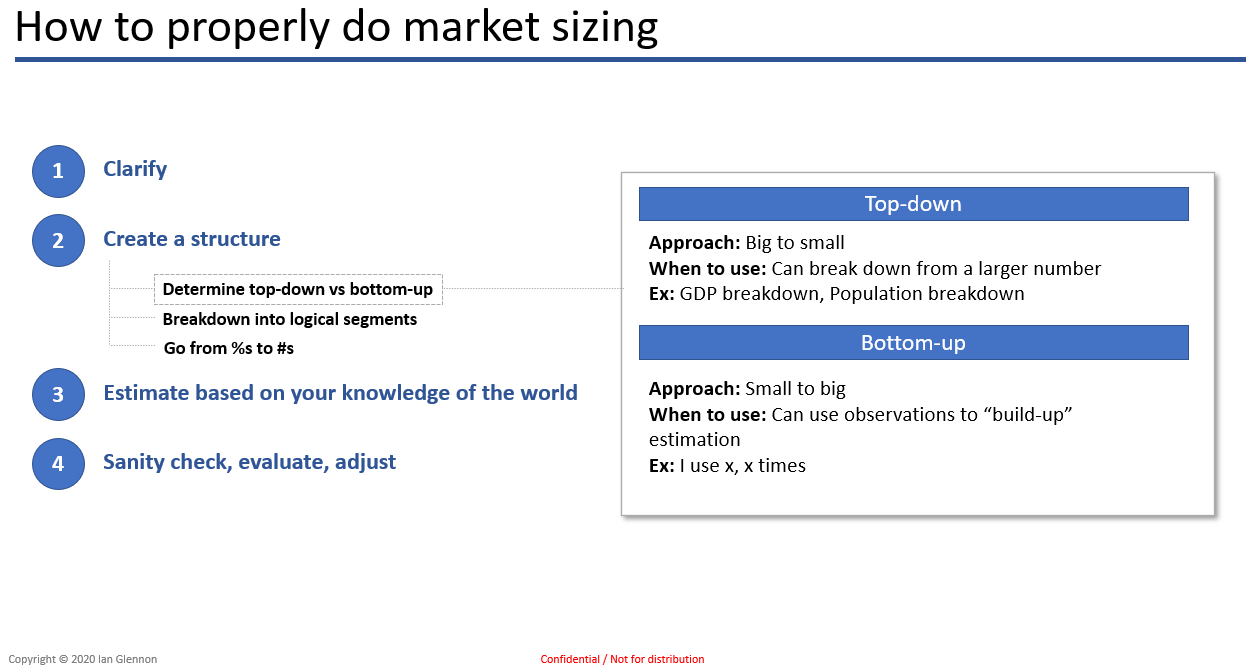Good evening everybody,
Happy New Year,
I encountred a case study, where the interviewee needed to estimate the number of planes (globally). The correction is not very detailed, I just know that the interviewee had to size the number of planes... I cannot figure out a relevant methodology to estimate that number: should I start by the number of airports ? Or passengers? etc.
Many thanks for your help,
Have a lovely evening















